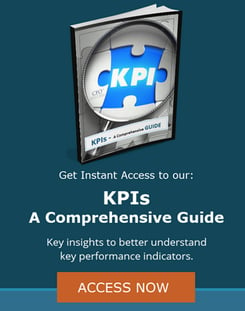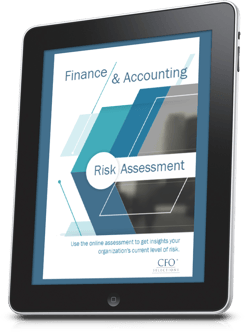 Expense reduction services and cost reduction consultants have been extremely busy over the last year as organizations scrambled to overcome pandemic-related barriers and an overall downturn in the economy. Many companies that had been thriving before the pandemic saw their future success threatened and quickly froze their spending on everything from marketing to R&D. Others took a more measured approach, tightening spending across the board instead of cutting any areas altogether. And while their intentions were good, many businesses missed the mark when it came to executing cost containment strategies.
Expense reduction services and cost reduction consultants have been extremely busy over the last year as organizations scrambled to overcome pandemic-related barriers and an overall downturn in the economy. Many companies that had been thriving before the pandemic saw their future success threatened and quickly froze their spending on everything from marketing to R&D. Others took a more measured approach, tightening spending across the board instead of cutting any areas altogether. And while their intentions were good, many businesses missed the mark when it came to executing cost containment strategies.
The reason too many cost reduction approaches fail is because they are predicated on the wrong assumptions. The assumption is that reducing costs will improve cash flow to allow struggling or compromised companies the breathing room needed to stay in business.
Unfortunately, the problem with simply looking for ways to reduce spending is that this strategy only focuses on elimination without a broader financial context to evaluate things like:
- How waste-related expenses differ from key business expenses
- The “softer” costs of reducing expenses that are difficult to quantify
- The long-term cost of making cuts that have a short-term benefit
- Other non-cost cutting options to improve cash flow
- Times when increased spending may help the business to rebound more quickly
Cost reduction should be one component of an overall financial strategy to aid cash strapped or struggling businesses. Therefore, a sustainable financial strategy should aim to understand:
Where Waste is Occurring
The most effective cost containment strategy is waste reduction.
Everyone can agree that minimizing waste is the best way to get costs under control when cash flow is tight, or the future is uncertain. However, unless you can effectively distinguish between waste and operational expenses, your organization cannot successfully eliminate the frivolous expenses without risking critical processes.
Sounds simple, right? As an example, documents that are printed, mailed, signed, and sent back instead of using an electronic signing service are a waste of resources in the form of paper, printer ink, postage, and time – that is easy enough to understand. Unfortunately, waste is not always so clear cut.
Waste can come in many forms, including:
- Unused space in a warehouse
- Unutilized bandwidth or cloud storage space
- Raw material scraps
- Unusable manufacturing process byproducts
- Damaged products
- Returned items
- Unnecessary utility usage
- Squandered company time
- Misused company assets (computers, phones, vehicles)
The right financial leadership can assist in not only identifying where this kind of waste is occurring, but also implement the changes needed to reduce or eliminate it.
The True Cost of Expense Elimination
Of course, every organization has plenty of areas where non-waste expenses can be eliminated as well.
However, just because expenses can be cut, does not mean that they should be.
Eliminating certain costs may have adverse effects like reduced employee morale that far outweigh their value. Often these types of cost-benefit analyses must be done on an individual basis while considering the specifics traits of the company involved. For example, one company may be able to successfully curtail expenses by eliminating paid educational offerings while another may need these kinds of offerings to preserve their company culture and keep their employees motivated.
When deliberating on whether to reduce or eliminate spending in a particular area, examine how the spending change may trickle down through your organization, especially in areas like:
- Compensation structures
- Employee scheduling
- Benefits and perks
- Business travel
- Team building and company culture initiatives
- Business process outsourcing and automation
- Technology solutions
Unfortunately, it may not be possible to identify the outcome of cutting an expense until it has occurred, which is why cost analysis must also include a “softer” evaluation of the effects of that spending decrease. As a result, spending changes should not simply be a dollar value conversation, but rather a broader cause-and-effect discussion that aims to anticipate adverse costs and respond appropriately to them when they cannot be foreseen.
Cost Reduction Limitations
The most damaging outcome resulting from a cost reduction strategy is inadvertently increasing future costs. The hard truth is that cutting some costs now can result in higher costs later, which is a strategic cost reduction failure if the goal is to not only keep the business afloat but to also poise it for growth later.
The most common scenario where this is occurs is in staffing. When companies lay off employees to cut short-term costs and then need to hire staff back into those roles later, they are increasing their long-term costs in a way that is potentially unnecessary.
The pandemic was probably the most striking example of this cost strategy backfire. Companies that laid off or furloughed employees in droves to preserve cash flow in 2020 then needed to incur significantly higher costs to rehire staff in 2021. However, this is not simply a pandemic-related occurrence. Hiring a new employee has always more expensive than retaining existing employees, which is why downsizing your business is such a hot button issue.
An experienced CFO can assist in this area, advising on what kinds of short-term and long-term cost tradeoffs exist to provide a more well-rounded long-term financial strategy.
Where Spending Should Increase
While it may seem counterintuitive, sometimes spending increases can pull an organization through tough times better than spending cutbacks.
In fact, data from previous economic downturns indicates that marketing expenses have been linked stronger recovery rates during and after the recession has ended. And while this may not be the ticket for every business to pull through every hardship, it illustrates that cutting spending is not the only beneficial strategy to consider.
Remember, the strongest financial plan is the one that will get your organization from where it is now to where it wants to go in the future.
A seasoned CFO can assist with strategic cost saving measures as well as broader financial planning. If you do not have an experienced professional at the helm of your finances and lack the time or budget to hire one, fractional CFO services may be the answer. Contact us to find out more about how a part-time or interim CFO can help you set the right course to a stronger future for your organization.





